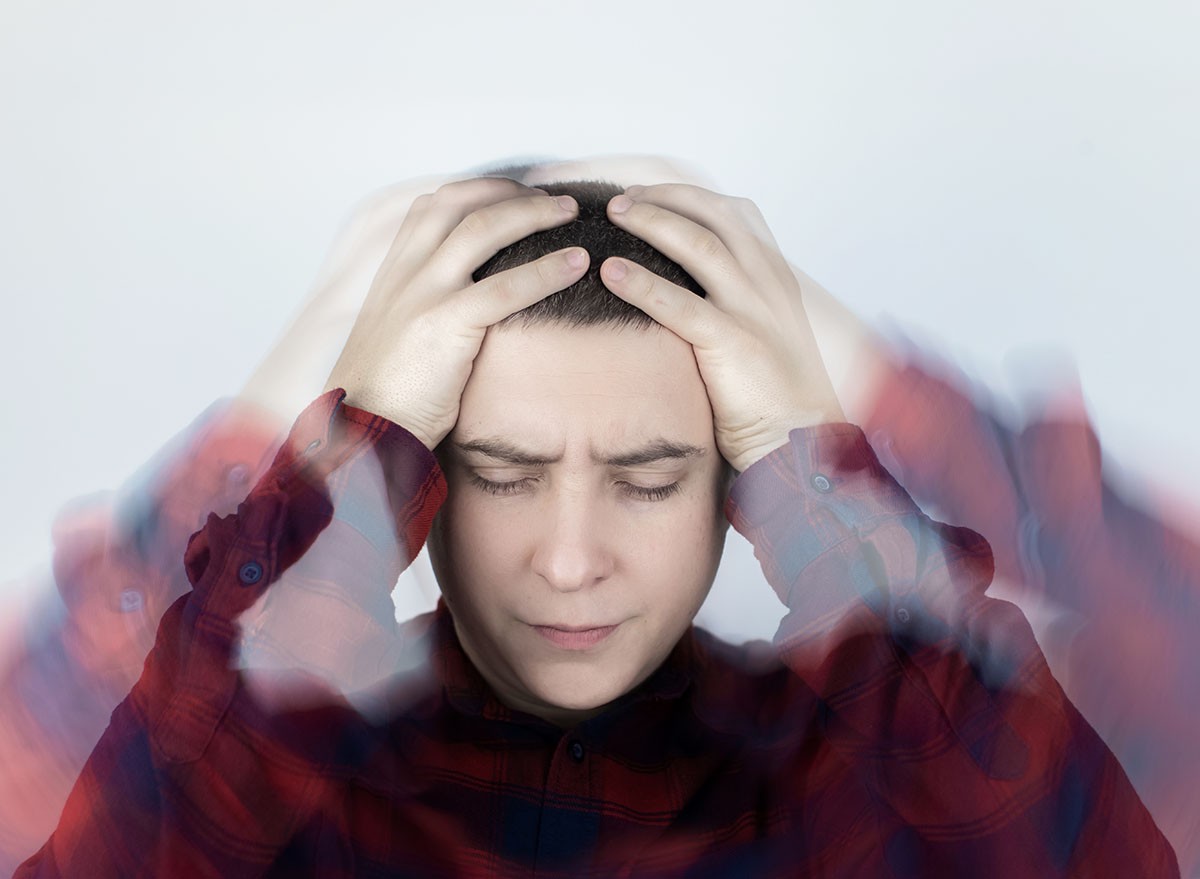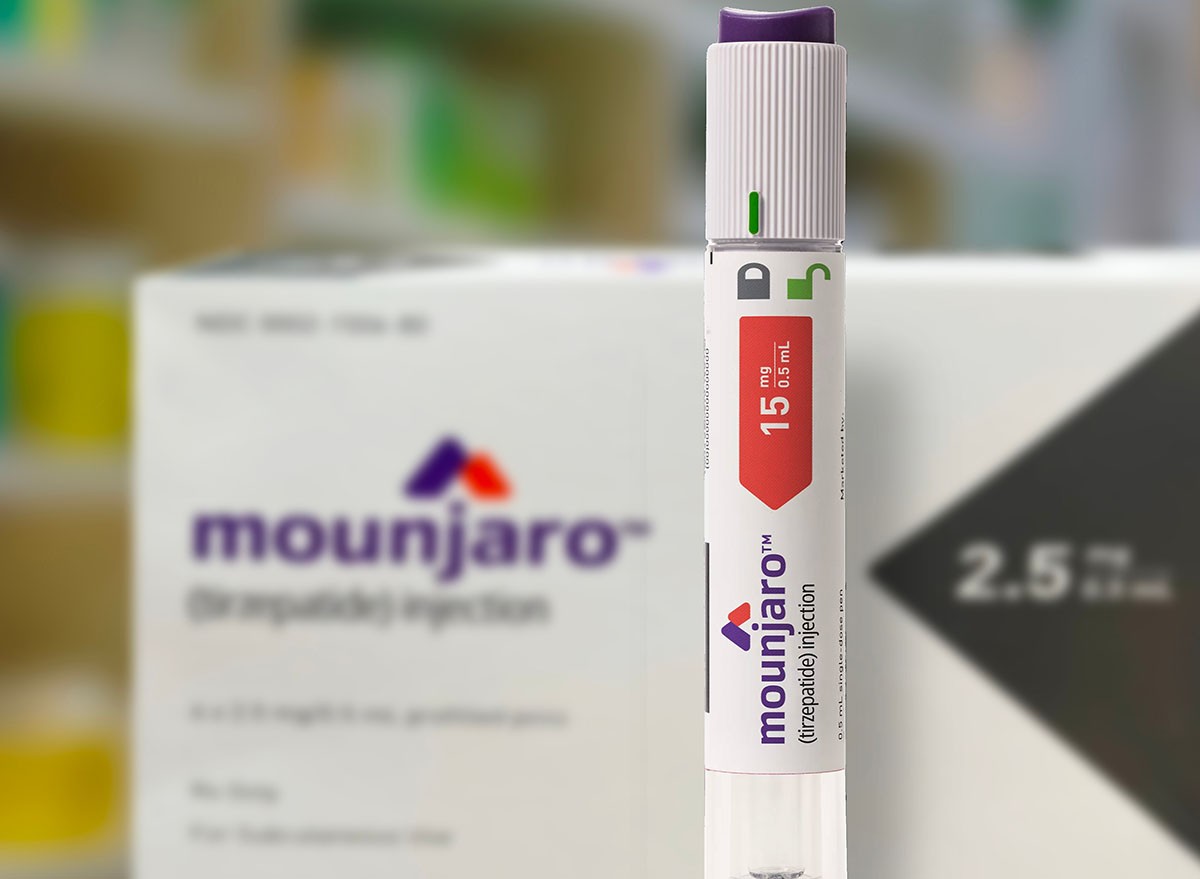She Lost 65 Pounds on GLP-1 and Here Are Her 4 Survival Tips

We've all been there – trying to get healthy but feeling like nothing ever sticks. For Amanda, GLP-1 medication changed everything. "I started Tirzepatide to get my cravings under control and ended up losing 65 pounds," says Amanda, who now helps others navigate their own weight loss journeys. "If you've been feeling stuck or like nothing works anymore—this might be the thing that changes everything." Read on to discover her battle-tested strategies for managing side effects and maximizing results—practical tips that could make all the difference in your own GLP-1 journey.
What Exactly Is Tirzepatide?
Tirzepatide is a glucose-dependent insulinotropic polypeptide (GIP) receptor and glucagon-like peptide-1 (GLP-1) receptor agonist, says Mayo Clinic. It's used for treating type 2 diabetes when combined with diet and exercise to help control blood sugar. Tirzepatide is also approved for weight loss, helping patients with obesity lose weight and keep it off. Additionally, it's used to treat moderate to severe obstructive sleep apnea (OSA) in obese patients.
RELATED: 15 Things to Know Before Requesting Ozempic for Weight Loss
Beat the Nausea Blues

Those first weeks on GLP-1 medication can be rough. Amanda remembers it well: "That first month came with a wave of side effects I didn't expect. Nausea was the worst—it made me second-guess everything." She recommends sipping electrolytes throughout the day and eating small amounts regularly. "Making sure I had something in my stomach—small bites made a big difference," Amanda explains in one of her posts. Don't hesitate to take anti-nausea medication if your doctor prescribed it.
Gastrointestinal side effects are common with Tirzepatide. According to Mayo Clinic, the medication is administered as a shot under the skin of your stomach, thighs, or upper arm. You should use a different body area each time you give yourself a shot and keep track of injection sites to properly rotate them. The liquid in the pen should be clear and colorless to slightly yellow, and you should use a new needle each time.
Prevent Those Dizzy Spells

Many people mistake low blood sugar symptoms for medication side effects. "I was feeling foggy, lightheaded, and shaky… and thought it was the GLP-1 messing with me," Amanda recalls. "But really? My blood sugar was crashing because I wasn't eating enough." She now prioritizes protein within two hours of waking up and keeps easy snacks on hand. The goal isn't starvation. As Amanda puts it, "The goal with GLP-1 isn't to stop eating—it's to help you eat enough to feel good and still lose weight."
Hydrate More Than You Think

When your appetite decreases, thirst signals often diminish too. "Water is NOT optional on this stuff," Amanda insists. "GLP-1s don't just suppress hunger—they also suppress thirst, which can make staying hydrated way harder than expected." She recommends keeping water bottles in every room and adding electrolytes daily. This simple habit can reduce headaches, nausea, fatigue, and constipation—all common medication side effects that proper hydration helps manage.
RELATED: 20 Possible Ozempic Side Effects
Don't Confuse Less Hunger with Less Need

One of the trickiest mindset shifts is understanding that reduced hunger doesn't mean reduced nutritional needs. "I used to think not being hungry meant I was winning… like if I could just survive on coffee and skip meals, I was doing it 'right,'" Amanda admits. This approach left her exhausted. Now she focuses on fueling her body even when not hungry, prioritizing protein in small meals. As Amanda learned, "GLP-1 helped me reset my hunger cues, but it's still a learning curve—and that's okay."
Try Evening Dosing

If side effects are disrupting your days, consider changing when you take your medication. "Try taking your shot in the evening and sleep through the side effects," suggests Amanda, who lost 65 pounds on Tirzepatide. This simple schedule shift allows you to rest through the initial hours when side effects are often strongest. Combined with staying hydrated and adding a pinch of salt to your water, this strategy can make your GLP-1 journey much more comfortable.
Keep Healthy Snacks Ready

The appetite-suppressing effects of GLP-1 medications can make regular meals challenging. Amanda recommends preparing protein-rich options you'll actually want to eat. "I focus on snacks I actually want to eat – cheese sticks, protein bars, even a few bites of cottage cheese," she says. Having these ready before hunger strikes helps prevent blood sugar crashes that can trigger headaches and fatigue. Small, consistent fuel keeps your energy stable even when your appetite says you're not hungry.
RELATED: What Happens to Your Body When You Stop Taking Ozempic
Give Yourself Time to Adjust

The adjustment period varies for everyone, but most people find side effects ease after the first month. "If you're in that early phase, hang in there. This part doesn't last forever—and you're doing better than you think," Amanda encourages. The weight loss journey with GLP-1 medication is about finding sustainable habits that work for your body. As Amanda discovered after losing 65 pounds, "This journey is about feeling better, not just eating less."According to Mayo Clinic, Tirzepatide is used once weekly (every 7 days) and can be taken with or without meals at any time of day. For best results, it should be used on the same day each week. It's important to follow your healthcare provider's instructions carefully and to use Tirzepatide as part of a comprehensive approach that includes diet and exercise. While managing side effects is important, remember that Tirzepatide works by helping you feel full sooner and keeping food in your stomach longer, reducing your appetite and the amount of food you eat. And if you enjoyed this article, don't miss 20 Incredible Ozempic Success Stories of All Time.




